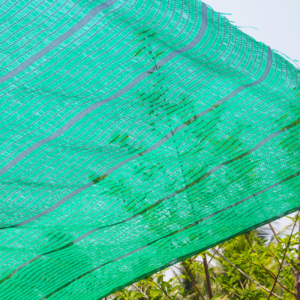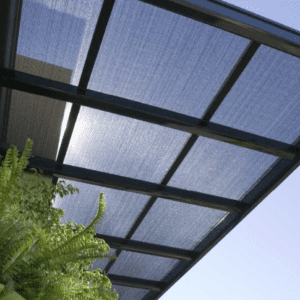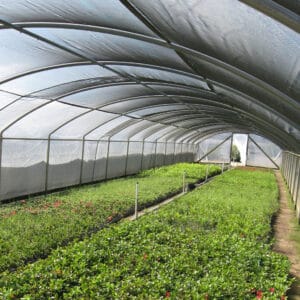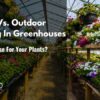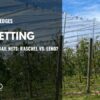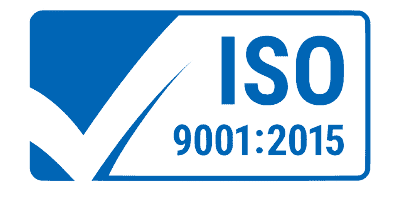Introduction
Your greenhouse, either made up of glass or plastic, gets heated during hot weather. Such heat conditions can damage your plants and save your plants; you need to install a proper ventilation and shading system.
There are enormous ways to cover your greenhouse during the summer season. But in this article, we will discuss greenhouse netting.
Let get started quickly with the introduction of greenhouse netting
What is greenhouse netting?
As the name suggests, greenhouse netting is a net that covers your greenhouse to provide shade and protect it from heat. Greenhouse netting is also known as shade cloth. Netting lowers the greenhouse temperature, giving a cool vibe to the plants in the hot season. It controls the climate by reducing the light intensity passing to the greenhouse.
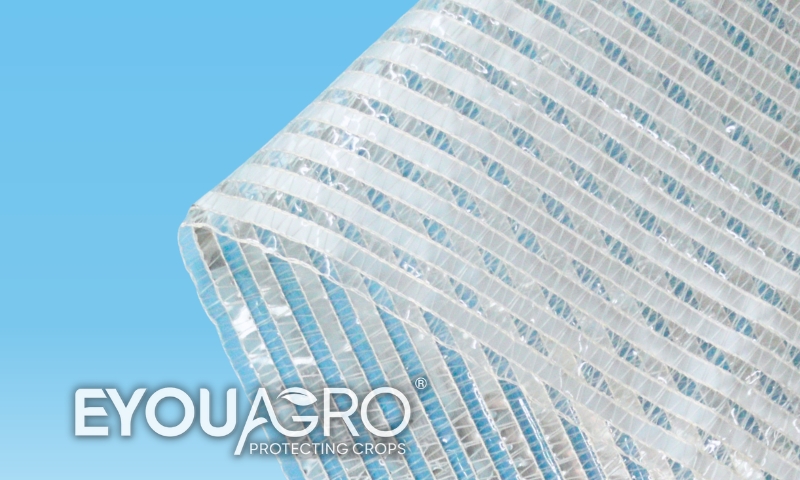
You must be thinking that ventilation also would be sufficient to keep the greenhouse plants fresh, but you miss the solar heat factor that spreads through the light. The sun’s light energy is warm enough to heat the greenhouse and raise the temperature, which can dehydrate and kill the plant in the end. Though plants’ growth is dependent upon sunlight yet too much direct sunlight will damage the plant. So, a controlled amount of light is required, and greenhouse netting is a way to control sunlight intensity in hotter months.
How netting protects the greenhouse?
As already discussed, the sun’s radiant heat energy damages the greenhouse, specifically the UV radiation. These radiations are not visible through the naked eye because UV wavelength is longer than the usual sun rays. For the photosynthesis process, plants require blue and red lights with a total spectrum ranging from 400 to 700nm. Any light or rays greater than 700nm are likely to damage the plant and its photosynthesis process. Exposure to a tremendous amount of UV light can badly damage the plant. The damage can be in the form of fruit or crop discoloration, early sprouts growth, the dry plant, which affects overall health, or in extreme cases, killing the plant.
To avoid damage caused by the sun, heat, and light, greenhouse netting in this regard protects the crops by reflecting the sun rays and even blocking them. Plants require around 2% of sunlight for their growth, and greenhouse netting ensures adequate light transfers to the plants. Besides reflecting heat, netting also provides a cooling effect to the plants.
What is greenhouse netting material?
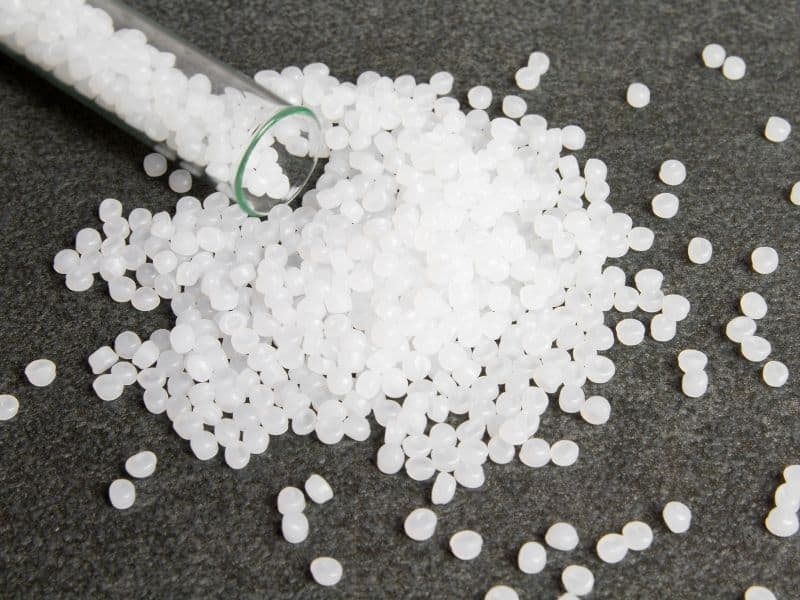
Usually, the netting material of the greenhouse is high-density polyethylene. It has anti-rip and stretchable property making it the best choice. It is available in different densities that define the sunlight percentage passing through it. Typically, the greenhouse netting densities or percentage ranges from 5% to 95%. Lower percentages allow maximum light to pass, while higher percentages provide maximum protection against sunlight and heat.
Does netting provide heat protection?
Yes, greenhouse netting provides heat protection. The green color of the net reduces light by almost 75% and converts the light rays into heat stored in the net. The temperature of the netting rises and makes it a solar heat collector. The netting temperature is higher than the air temperature, so when air passes through the greenhouse net, it cools down and transfers the heat outside. The netting works as evaporative cooling, in which cool air draws up, cooling the greenhouse netting and overall environment in it.
What is the type of netting for a greenhouse available in the market?
Today, you are likely to see two types of greenhouse netting available in the market: knitted and woven.
The knitted greenhouse netting pattern uses HDPE material while manufacturing. One continuous yarn looped to form a knitted braid pattern in rows. The life expectancy of knitted greenhouse netting is around ten years.
Woven greenhouse netting manufactured from high-density HDPE. Multiple yarns are used in a crossed-over pattern to shape them. The life expectancy of a woven net is 10 to 12 years.
Knitted vs. woven greenhouse netting
The woven greenhouse netting is 30% heavier as compared to knitting. Because of this, woven netting is a bit expensive. Knitted is easy to handle and install, while woven netting requires technical expertise for installation. Both nettings can be UV protected and can hold extreme hot weather conditions.
Woven netting is usually available in black color while knitted is available in green and black color. The significant difference in both is that woven greenhouse netting unravels when cut while knitted does not tear. That is mainly because of the pattern structure of the netting. If a cut or hole appears in the knitted net, then its design will remain intact and will not unravel, while the cut in woven will unravel and will be challenging to manage.
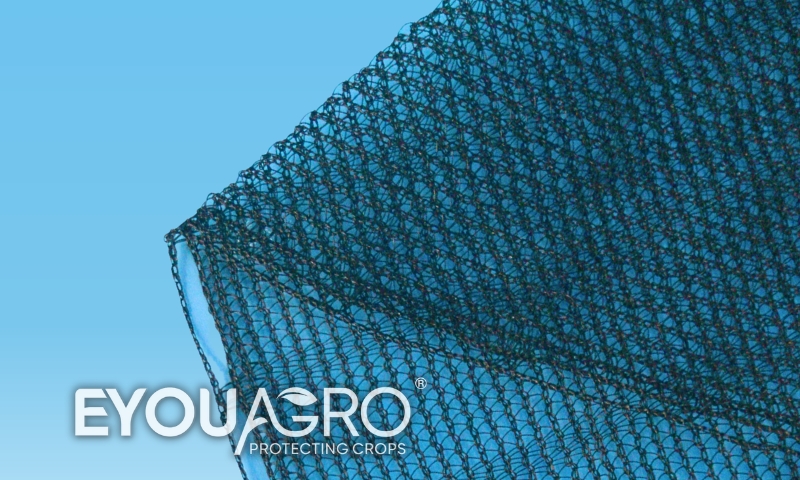
Moreover, knitted greenhouse netting is chemicals and detergent safe. This netting has stretchable property while woven do not stretch. Woven greenhouse netting utilizes pet shades and yard shade, while knitted is majorly used for greenhouses and crop cover.
You can get the best-knitted greenhouse netting from Eyouagro. We offer superior quality products as per your requirements.
Which netting is best for greenhouse or crops?
Knitted netting is the best netting for greenhouses or for covering crops. Due to its stretchable functionality, it is easy to use and install. Moreover, it has color options and is available in different percentages.
Many experts recommend using knitted greenhouse netting for the shading purpose of crops and fields.
For vegetables, knitted greenhouse netting of 30% to 50% is ideal;
however, some plants require more shade,
so for such plants, a denser mesh is required approximately 30% to 85%.
Conclusion
In sum, greenhouse netting is vital for farmers who live in hotter areas. The scorching sun can cause damage to every living being. Just like animals and humans’ plants also require protection from the sun to grow and produce fruit. If you wanted to enjoy a healthy harvest, you must consider installing a knitted greenhouse netting.
Eyouagro is one of the leading companies that offer the best greenhouse netting. The quality control policies of Eyouagro ensure the qualitative supply of products to build long-term clients. Before selling, products are tested to withstand difficult and challenging conditions and ultimately produce productive results.
Check out the netting products of Eyouagro and get the most economical quote now.



